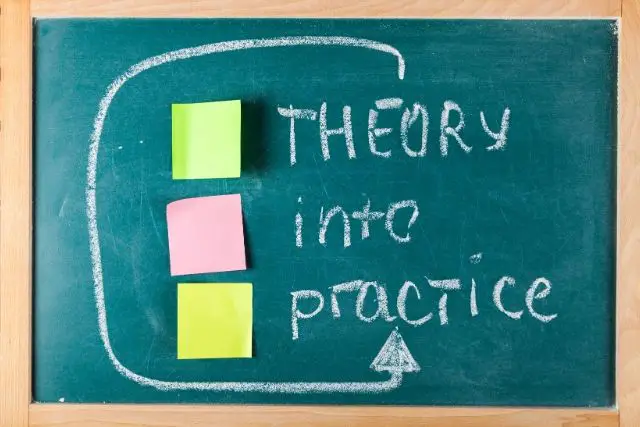Elton Mayo And His Key Theories
Management, according to human relations, is the study of the behavior of employees in the workplace. And this approach of human relations also has its roots in the myriads of experiments which was conducted by the renowned professor, Elton Mayo and his team at the Harvard School of Business, precisely at the Hawthorne plant of Western Electric Company.
Professor George Elton Mayo (1880 – 1949) and his team conducted an experiment that had a massive impact on management. In short, Elton’s work transformed management thinking and also paved the way for the modern system of management that many organizations are enjoying today.
As a result of his experiment, Mayo was able to discover that job satisfaction among workers was difficult to achieve through short-term incentives offered to them, but preferably through participation in discussions. However, Mayo’s management approach is not fundamentally an alternative to Taylor’s scientific management theory. But the fact that he presented a piece of evidence to back up his claim gave his work more value and made it difficult for management scholars like F W Taylor to ignore.
Before Mayo’s studies drew the relationship between productivity and social factors, things were a bit different. And before his studies, the productivity of employees in the workplace was considered to depend entirely on the wages paid and working conditions. But his work pointed out that work satisfaction had more of a massive impact on productivity.
George Elton Mayo’s Key Theories
Mayo did leave his footprint in management thinking with his experiment; a study conducted in West Electric’s Hawthorne plant located in Chicago, which has over 29,000 workers. The company opened the door to the National Research Council to carry on with their experiment that focuses on the relationship between the efficiency of employees and workplace lighting. The study was carried out in the year 1924.
The Hawthorne Experiment – How it Happened
The idea of this experiment was to figure out the impact different incentives have on worker’s productivity. So the entire workers in the plant were shared into two groups for this purpose. One of the groups was regarded as the control while the other was the main group. And in the main group, the lighting condition was increased so know if worker’s productivity will increase, and it did.
But then, something strange also took place. When the light became low in the control group, the team also figured out that productivity also improved to some degree. I other words, employee satisfaction improved.
However, in addition to the experiment done using lighting, other incentives were introduced to have more comprehensive research and result. They include rest pauses and payment incentives, which were also manipulated at various intervals to have varied output. There was also a partial conclusion regarding the impact of lighting which was that lighting had little or no effect on output levels amongst employees.
At this point, no factual conclusion was reached even with all the results at their disposal. But a breakthrough was about to happen. Mayo, who had not been part of the experience all along was invited to contribute. And his findings were contrary to what every other person believed or had in mind.
Mayo was quick to point out the fact that workers are not machines and should not be treated as such. In short, how they are treated and the environment they find themselves is equally as important as anything else. They recognized that employees do have a sense of belonging and long for recognition too.
The Hawthorne effect
The social concern for workers was one of the significant findings of the Hawthorne studies. Another was the Hawthorn Effect which states that changes in employee behavior happen when management decides to monitor them. In the real sense, when someone is watching you while you are working on a task, then you may even be more focused and perform a lot better. You will also change your behavior too. So going back to the previous Hawthorne lighting studies, you can understand why the productivity of employees improved when the lighting was increased and decreased is apparent. But a very significant discovery from the Hawthorne study is the fact that when employees are treated well, they may turn out to be more productivity for the said organization.
George Elton Mayo’s Theory of Motivation
Following a successful analysis of the data derived from the Hawthorne studies, Elton Mayo was able to propose that environmental factors or payment incentives do not motivate workers. He concluded that positive relational factors tend to play a more significant role in boosting employee productivity or job satisfaction. In a nutshell, there is a vital role that group or teamwork plays that management cannot neglect, particularly when it comes to productivity.
Elton Mayo also created different positions to show how much productivity can change in certain conditions or groups. And these comprise of the cohesiveness and norm of a group. The group cohesiveness indicates how well the team members get along. And the norm, on the other hand, focuses on whether positive or negative traits are permitted in the group.
Below are the various positions that were created by Mayo
- Group Setting with Low Cohesiveness and Low Norm
Groups like these usually have low motivation which invariably leads to no or little productivity among group members. The bottom line is that such teams might not last very long, and are quite poor in terms of productivity. In short, none of the team members will perform satisfactorily.
- Group Setting with High Cohesiveness and Low Norms
If you are familiar with gangs, then you already are familiar with what happens in such groups. They also fall into this category. Productivity is hampered in such settings due to a negative signal each member sends out which impacts the entire group. But make no mistake; their bond as members of the group is very active. Just that negative behavior is encouraged instead of positive ones.
- Group Setting With High Norms and Low Cohesiveness
Such teams can have a little bit of a positive impact on productivity, which is quite limited. The reason is that team members in such a group setting are not working towards achieving the goals of the team. Instead, they are looking to meet theirs. Any of the team members can produce massive results, but it will not have any impact on the productivity of other members.
- Group Setting with High Norms and High Cohesiveness
Such teams are the ones that can have a massive positive impact on the productivity of each team member. The members give support to each other and work together to achieve success. But in as much as everyone in such a team has the interest of the team at heart, they also show commitment to making their success.





